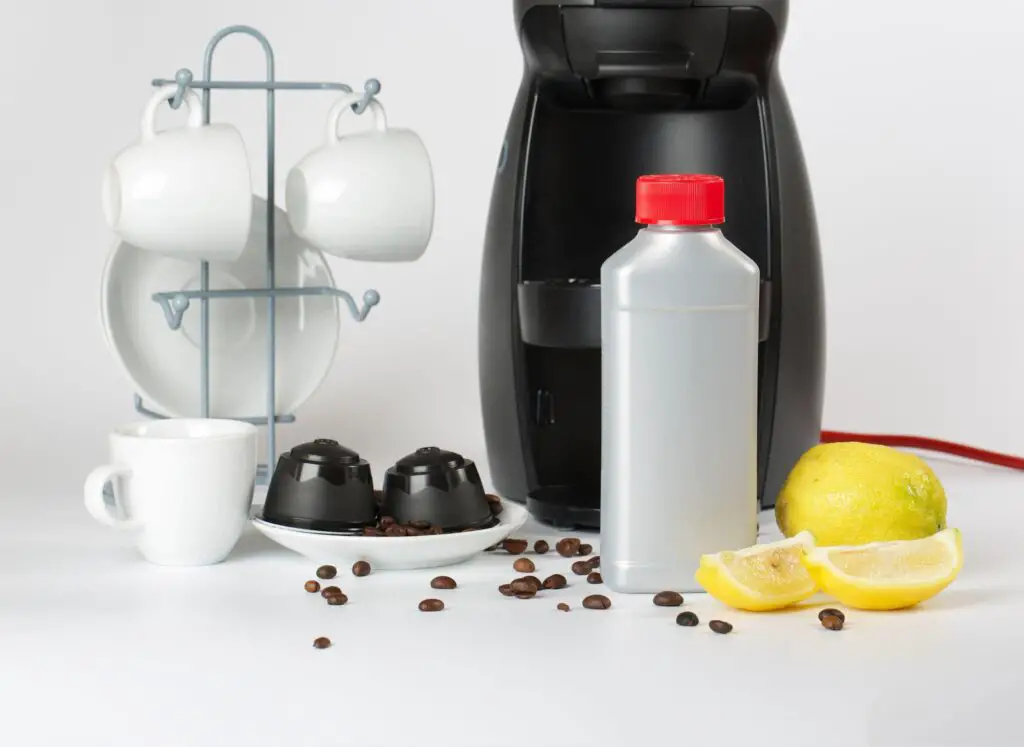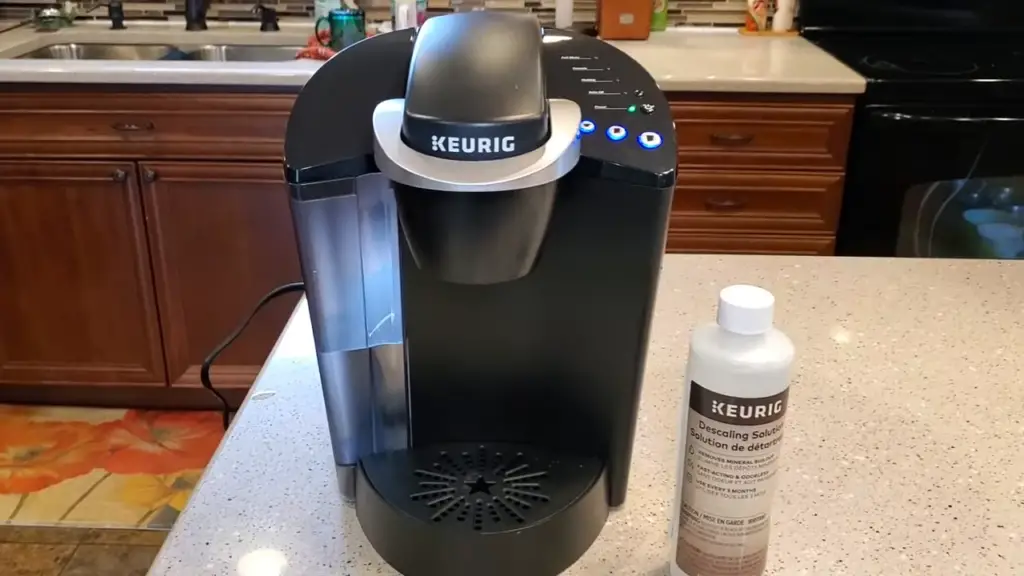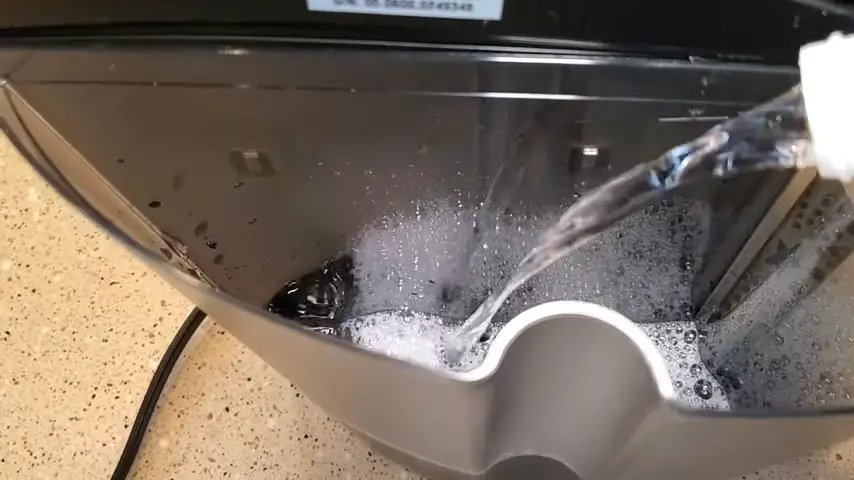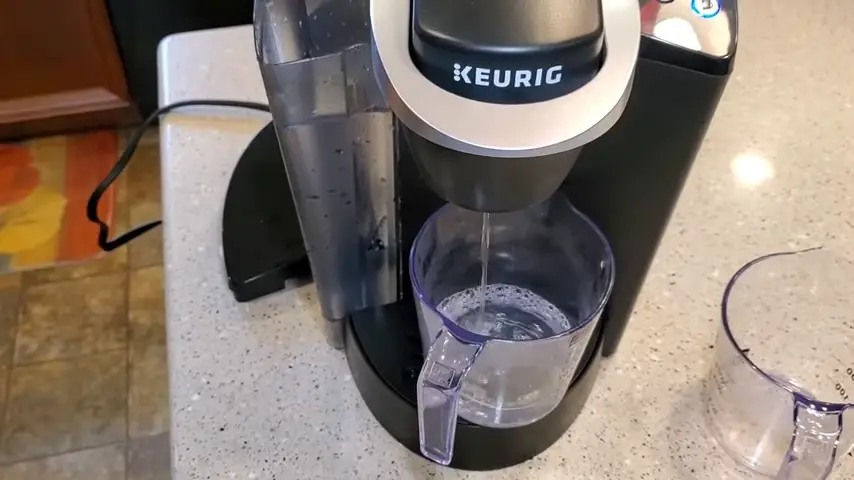Regular descaling is crucial for maintaining the optimal performance, longevity, taste, cleanliness, and energy efficiency of your Keurig coffee maker. Descaling removes mineral deposits and scale that can accumulate over time, clogging the machine’s internal components and affecting water flow, brewing times, and flavor. It also prevents the buildup of harmful bacteria and mold, extends the lifespan of the coffee maker, and reduces energy consumption. Using a descaling solution, vinegar, water mixture, and other necessary supplies, you can easily descale your Keurig by following a step-by-step process. Neglecting to descale your coffee maker can lead to reduced performance, unpleasant taste, clogged water lines, increased energy consumption, shortened lifespan, malfunctioning sensors, and voided warranty. The duration for letting vinegar sit in a Keurig depends on the descaling process recommended for your specific model, so it’s best to refer to the manufacturer’s guidelines.
Do you enjoy a delicious cup of coffee from your Keurig coffee maker? If so, keeping your machine in top shape by regularly descaling it is important. Descaling is vital in maintaining your machine’s performance and ensuring a great-tasting cup of coffee every time. In this step-by-step guide, we will walk you through the process of how to descale your Keurig coffee maker, using factual data and expert tips to help you achieve the best results. So, let’s dive in and learn how to descale your Keurig coffee maker!
Why Is Descaling Important for Your Keurig Coffee Maker?

Descaling is an essential maintenance task for your Keurig coffee maker, ensuring its optimal performance and longevity. Over time, minerals, such as calcium and lime, can build up inside the machine’s internal components. This accumulation, known as scale, can clog and obstruct water flow through the system. As a result, the coffee maker may experience reduced water pressure, slower brewing times, and even incomplete brewing cycles. By regularly descaling your Keurig coffee maker, you can effectively remove these mineral deposits and restore the machine to its full functionality.
Moreover, descaling helps to maintain the quality and taste of your coffee. When scale builds up, it can affect the flavor of your brew, resulting in a dull and flat-tasting coffee experience. Descaling unclogs the water pathways and eliminates any residue that may alter the flavor of your coffee. This ensures that every cup brewed with your Keurig coffee maker delivers the rich, aromatic, and satisfying flavors that you expect.
In addition to improving performance and taste, descaling is crucial for your coffee maker’s overall health and cleanliness. Scale deposits can create a breeding ground for bacteria and mold, which thrive in the damp environment they create. These microorganisms not only affect the taste of your coffee but can also pose potential health risks. Regular descaling removes these harmful elements, ensuring your coffee maker remains hygienic and safe.
Furthermore, descaling can greatly extend the lifespan of your Keurig coffee maker. When scale accumulates within the machine, it strains internal components, such as heating and pumps. This can lead to increased wear and tear, reducing the overall durability and longevity of the coffee maker. By descaling regularly, you can prevent scale buildup and maintain the efficiency of these crucial components, ultimately prolonging the lifespan of your machine.
5 Benefits of Regular Descaling Your Keurig Coffee Maker
1. Improved Performance: Regular descaling helps to remove calcium deposits and scale that can build up inside your Keurig coffee maker over time. These deposits can hinder your brewer’s performance by clogging the system and affecting the water flow. By descaling regularly, you can ensure that your coffee maker continues to brew coffee at its optimal level.
2. Prolonged Lifespan: Calcium deposits and scale not only affect the performance of your coffee maker but can also damage its internal components. Over time, the buildup can lead to clogged valves, pumps, and heating elements, resulting in costly repairs or even needing a new coffee maker. By descaling regularly, you can extend the lifespan of your Keurig and avoid unnecessary expenses.
3. Better-Tasting Coffee: When calcium deposits and scale build up inside your coffee maker, they can affect the taste of your brewed coffee. The buildup can leave a residual taste in your coffee, making it less enjoyable. Descaling removes these deposits, allowing your coffee to taste fresh and flavorful without any unwanted aftertaste. A clean coffee maker ensures that you can fully savor the aroma and flavors of your favorite brew.
4. Enhanced Energy Efficiency: A coffee maker that is free from scale and deposits can operate more efficiently. When scale accumulates on the heating element, it can interfere with heat transfer, causing the coffee maker to work harder and consume more energy. Regular descaling helps restore your Keurig’s efficiency, allowing it to heat water more quickly and brew your coffee more energy-efficiently.
5. Prevented Buildup: By descaling your coffee maker regularly, you can prevent the buildup of calcium deposits and scale before it becomes a problem. By following the manufacturer’s guidelines for descaling, you can ensure that your Keurig stays clean and free from any potential blockages. Preventing the buildup of scale will save you time and effort in the long run, as you won’t need to spend extra time troubleshooting or deep cleaning your coffee maker.
The Necessary Supplies for Descaling Keurig Coffee Maker

Proper maintenance is essential when it comes to enjoying a fresh cup of coffee from your Keurig coffee maker. Over time, mineral deposits can build up inside the machine, affecting the taste and performance of your brew. Descaling your Keurig machine regularly is the key to keeping it in top condition. To make the descaling process a breeze, here is a list of necessary supplies to have on hand:
1. Descaling Solution: The most crucial item on your list is a descaling solution specifically designed for Keurig coffee makers. This solution helps break down mineral deposits and remove built-up residue inside the machine. Look for a descaling solution compatible with your model and safe for use with Keurig machines. It’s best to follow the manufacturer’s instructions regarding the use and frequency of this solution.
2. Distilled White Vinegar: Distilled white vinegar can be a suitable alternative if you prefer a natural descaling agent. It has acidic properties that effectively dissolve mineral deposits, ensuring thorough cleaning of your Keurig. However, remember that using vinegar may leave a temporary odor, which can be mitigated by running an additional water cycle.
3. Water: You will need considerable water to carry out the descaling process. It is recommended to have at least 1.5 liters of water available. Depending on your Keurig model, you may need additional water for rinsing purposes.
4. Clean Cloth: A clean, lint-free cloth or sponge is handy for wiping down the external surfaces of your Keurig machine after descaling. This helps remove any residue or moisture and keeps your machine looking pristine.
5. Empty Container: Prepare an empty container holding at least 1.5 liters of liquid. This container will be used to collect the water and descaling solution or vinegar mixture expelled during the descaling process. A large bowl or a pitcher can be sufficient for this purpose.
6. Fine-Mesh Strainer or Coffee Filter: If you choose to descale using white vinegar, straining the vinegar before pouring it into the water reservoir can help ensure no sediment enters your machine. A fine-mesh strainer or a coffee filter can effectively remove any impurities.
7. Paperclip or Needle: Occasionally, mineral deposits can clog the needles that puncture the Keurig’s K-Cup pods. To address this, a paperclip or a needle is useful for clearing the blockage. Gently insert the paperclip or needle into the needle opening to remove debris.
8. Optional Accessories: Some optional accessories can enhance the descaling process. Keurig offers a Descaling Solution for easy purchase and a Keurig Water Filter Kit to help maintain the quality of your water and prolong the life of your machine’s internal components.
Remember, regular descaling is crucial to ensure that your Keurig coffee maker continues to provide you with delicious, high-quality coffee. By having these necessary supplies on hand, you’ll be able to maintain the performance of your machine and enjoy fresh, flavorful beverages day after day.
Step-By-Step Instructions for Descaling Your Keurig Coffee Maker

If your trusty Keurig coffee maker has been brewing less-than-perfect cups of coffee later, it may be due to mineral buildup or scaling. Descaling your Keurig machine is an essential maintenance task that helps remove mineral deposits and ensures the longevity of your coffee maker. This step-by-step guide will walk you through the process in a friendly and easy-to-follow manner.
| Step | Instructions |
|---|---|
| 1 | Gather materials: descaling solution, water, mug, cloth/sponge. |
| 2 | Unplug Keurig, remove and clean water reservoir. |
| 3 | Prepare descaling solution or vinegar-water mixture. |
| 4 | Place mug on drip tray, pour solution into reservoir. |
| 5 | Run descaling cycle until solution is dispensed. |
| 6 | Rinse the coffee maker by running fresh water cycles. |
| 7 | Clean and reattach all removable components. |
| 8 | Run a test brew without a K-cup to ensure proper function. |
| Done | Your Keurig is now descaled and ready to brew. |
Step 1: Prepare the Materials
Before you start descaling, gather all the necessary materials. You will need a descaling solution or a mixture of vinegar and water, fresh water, a large ceramic mug, and a clean cloth or sponge.
Step 2: Empty and Clean the Water Reservoir
Ensure that your Keurig coffee maker is unplugged. Remove the water reservoir and empty any remaining water. Wash it thoroughly with warm soapy water, rinse it well, and dry it with a clean cloth or sponge. Make sure no soap residue remains before reattaching it to the machine.
Step 3: Prepare the Descaling Solution
If you’re using a commercial descaling solution, follow the instructions on the packaging to prepare it. Mix equal parts of white vinegar and water if you prefer using vinegar. For instance, if you have 8 ounces of water, use 8 ounces of vinegar.
Step 4: Descaling a Solution
Place a large ceramic mug on the drip tray and lower the handle to ensure it’s in the open position. Pour the descaling solution or vinegar and water mixture into the water reservoir. Be cautious not to overfill. If needed, refer to the maximum fill line on the reservoir.
Step 5: Run the Descaling Cycle
Position a large ceramic mug on the drip tray and ensure it fits securely. Press the power button to turn on the coffee maker. Repeat this process until all the solution has been dispensed into the mug. Discard the liquid in the mug and return it to the drip tray. Repeat this step until the “Add Water” indicator light turns on.
Step 6: Rinse the Coffee Maker
Empty the mug and rinse it thoroughly. Refill the water reservoir with fresh water. Repeat steps 4 and 5, but use only fresh water instead of the descaling solution this time. This step is necessary to remove any residual solution or vinegar taste from the coffee maker.
Step 7: Clean and Reattach Components
Once the descaling and rinsing cycles are complete, clean the removable parts of the coffee maker, such as the drip tray, K-cup holder, and water reservoir. Use warm soapy water, rinse thoroughly, and dry them. Reattach all the components to the machine, ensuring they fit securely.
Step 8: Run a Test Brew

Fill the water reservoir with fresh water and place a ceramic mug on the drip tray. Run a brew cycle without a K-cup to ensure the system works properly. Discard the brewed water, and your Keurig coffee maker is now descaled and ready to brew your favorite cup of coffee.
Descaling your Keurig coffee maker is a simple yet crucial task that helps maintain the quality and efficiency of your machine. By following these step-by-step instructions, you can ensure that your coffee maker continues to produce the best-tasting cups of coffee for years to come. Happy brewing!
Can I Use Vinegar and Water to Descale My Keurig?
Many Keurig users wonder if they can use vinegar and water to descale their coffee maker. The answer is yes! Vinegar is an effective and affordable alternative to descaling solutions. It contains acetic acid, which helps dissolve mineral deposits and scales that can build up in your brewer over time.
To descale your Keurig using vinegar and water:
- Start by emptying the water reservoir.
- Mix equal parts vinegar and water in a container.
- Pour this mixture into the water reservoir and place a large mug on the drip tray.
Next, turn on your Keurig and run a brew cycle without inserting a K-Cup pod. This will allow the vinegar and water mixture to flow through the system and remove any buildup. Discard the hot liquid into the sink and repeat this process until the “add water” light illuminates.
Afterward, empty and rinse the water reservoir thoroughly. Refill it with fresh water and run multiple brew cycles until the vinegar smell dissipates. This ensures that any traces of vinegar are flushed out of the system.
It is important to note that using vinegar may leave a residual smell or taste in your coffee maker. To eliminate this, you can run an additional cycle with freshwater after descaling with vinegar.
While using vinegar and water is a simple and cost-effective method for descaling your Keurig, it may only be suitable for some models. Some Keurig brewers have specific descaling instructions, so it’s always a good idea to consult your machine’s user manual or the Keurig website for the most accurate guidelines.
Regardless of your chosen method, regular descaling is crucial to maintain your Keurig’s performance and prolong its lifespan. Descaling every 3 to 6 months, or as the manufacturer recommends, helps prevent mineral deposits and scale from hindering your brewer’s functionality.
So try vinegar and water descaling, and enjoy a fresh and delicious cup of coffee from your clean and well-maintained Keurig brewer!
What Happens if You Don’t Descale Your Coffee Machine?
1. Reduced Performance: If you need to avoid descaling your coffee machine regularly, the buildup of calcium deposits or scale can hinder its performance. Over time, these deposits can clog the internal components, resulting in slower brewing times and weaker coffee extraction. Your once efficient and quick coffee maker may need to be more active and produce subpar results.
2. Unpleasant Taste: Scale accumulation can also have a negative impact on the taste of your coffee. As the minerals in the water interact with the brewing system, they can alter the flavor profile of the coffee, leaving it with a bitter or metallic taste. This can be particularly noticeable if you have hard water, which is common in areas with high mineral content.
3. Clogged Water Lines: The buildup of scale can also cause clogs in the water lines of your coffee machine. These clogs restrict the water flow, making it difficult for the machine to brew a full cup of coffee. You may notice a significant decrease in the amount of coffee being dispensed or even no coffee at all.
4. Increased Energy Consumption: A coffee machine that is not descaled regularly may require more energy to function properly. The scale acts as an insulator, making it harder for the heating element to heat the water efficiently. This increases energy consumption as the machine compensates for the impeded heat transfer.
5. Shortened Lifespan: Neglecting to descale your coffee machine can significantly reduce its lifespan. The buildup of scale puts unnecessary strain on the internal components, causing them to deteriorate faster. This can result in expensive repairs or replacing the entire machine sooner than anticipated.
6. Malfunctioning Sensors: Many modern coffee machines have sensors that detect water levels, temperature, and brewing times. Scale buildup can interfere with these sensors, causing them to malfunction or give inaccurate readings. As a result, your coffee machine may not brew properly or shut off unexpectedly.
7. Voided Warranty: Most coffee machine manufacturers recommend regular descaling to ensure optimal performance. If you fail to follow these maintenance instructions, your warranty may be voided. This means that if your coffee machine experiences any issues related to scale buildup, you will be responsible for the repair or replacement costs.
How Long Do You Let Vinegar Sit in Keurig?
When it comes to descaling your Keurig® coffee maker, one common question that arises is how long to let the vinegar sit in the machine. The answer to this question depends on the specific descaling process recommended for your Keurig® brewer.
For most Keurig® models, the descaling process involves using a descaling solution, which combines water and a descaling agent. Generally, you pour the descaling solution into the water reservoir and then run multiple brew cycles to flush out any mineral deposits or scale. In this case, vinegar is not typically used as a descaling agent.
However, if you prefer to use vinegar as a natural descaling agent, the recommended duration to let it sit in your Keurig® coffee maker is typically around 30 minutes. This allows the vinegar to effectively break down and dissolve any mineral deposits inside the machine.
To use vinegar for descaling, you can follow a similar process as with the descaling solution. Empty the water reservoir and fill it with a mixture of vinegar and water, typically using a ratio of 1:1. Then, run multiple brew cycles until the reservoir is empty.
After the vinegar is allowed to sit in the Keurig® for about 30 minutes, it is important to rinse the machine with fresh water thoroughly. This helps to remove any vinegar residue and ensures that your coffee will not have a lingering vinegar taste.
It is worth noting that different Keurig® models may have specific descaling instructions, so it is essential to refer to the user manual or Keurig’s official website for precise guidance. Additionally, the frequency of descaling depends on the mineral content of your water. Regular descaling every 3 to 6 months is generally recommended to maintain optimum performance.
How Often Do You Need to Descale a Keurig?
Keurig® coffee makers are a convenient and popular way to enjoy a fresh cup of coffee at home. However, calcium deposits or scale can build up inside the coffee maker over time, affecting its performance. To prevent this, it is important to describe the Keurig® brewer regularly.
The frequency of descaling depends on the mineral content of your water, so it is recommended to use filtered or bottled water to minimize scale buildup. Typically, it is recommended to descale your Keurig® brewer every 3 to 6 months. The brewer itself will remind you when it’s time to descale by displaying a prompt, “Time to descale the brewer!” If you postpone the descaling process, the system will remind you again in 6 weeks. It is important to note that if your water has a higher mineral content, you may need to descale more often.
Regular descaling helps maintain the performance of your Keurig® brewer and ensures you continue to enjoy a great cup of coffee every time.
Tips for Maintaining Your Keurig Coffee Maker and Preventing Scale Buildup
Keurig coffee makers are popular with many coffee lovers, offering convenience and various flavors. However, over time, these machines can develop scale buildup, affecting the taste and performance of your brew. To help you keep your Keurig coffee maker in top shape, here are some tips for preventing scale buildup and maintaining its functionality:
1. Regularly Descale Your Machine: Scale buildup occurs when minerals present in water accumulate on the internal components of your Keurig coffee maker. To prevent this, it’s essential to descale your machine regularly. Follow the manufacturer’s instructions and use a descaling solution to remove any existing scale deposits.
2. Use Filtered Water: Using filtered water in your Keurig coffee maker can greatly reduce the mineral content and, subsequently, scale buildup. Using bottled or filtered water instead of tap water is advisable, as it may contain higher mineral concentrations contributing to scaling.
3. Remove and Clean the Water Tank: The water tank is integral to your Keurig coffee maker. Regularly remove and clean it to prevent any accumulation of dirt, debris, or scale residues. Wipe it thoroughly with a clean cloth; if necessary, use a mild detergent for a more thorough cleaning.
4. Clean the Brewer Regularly: Just like the water tank, the brewer also needs regular cleaning. Remove the K-cup holder assembly and rinse it under running water. Use a small brush or toothbrush to gently scrub any remaining coffee grounds before reassembling them back into the machine.
5. Clean the Needle: The needle that punctures the K-cups can become clogged with coffee grounds, resulting in slower or uneven brewing. To prevent this, remove the K-cup holder assembly and clean the needle with a paperclip or a specially designed tool. Be sure to do this gently and carefully to avoid any damage.
6. Avoid Leaving Water in the Machine: Avoid leaving any water in the tank or brewer after each use. Water that lingers in the machine can promote scale buildup over time. Once you’re done brewing, empty and clean the water tank, and ensure the brewer is free from any standing water.
7. Store Your Machine Properly: If you’re not planning to use your Keurig coffee maker for an extended period, make sure to store it properly. Clean and dry all components thoroughly, including the water tank, before storing them in a cool, dry place. This will help prevent mold, scale, and other issues that can occur from prolonged periods of inactivity.
8. Stay Updated with the Manufacturer’s Guidelines: Finally, make sure to stay updated with the manufacturer’s guidelines and recommendations for your specific Keurig coffee maker model. They may provide specific instructions on cleaning, descaling intervals, and any other maintenance tips that can keep your machine running smoothly.
By following these tips and maintaining a regular cleaning routine, you can enjoy a delicious cup of coffee from your Keurig coffee maker for years to come. Remember, a well-maintained machine not only ensures great taste but also prolongs the lifespan of your coffee maker. So, take care of your Keurig; it will always reward you with the perfect cup!
How Do I Reset My Keurig After Descaling?
After successfully descaling your Keurig coffee maker, resetting the machine to ensure optimal performance is important. Here is a step-by-step guide on how to reset your Keurig after descaling:
1. Turn off the power: Start by turning off the power to your Keurig brewer. This can be done by pressing the power button or unplugging the machine from the power source.
2. Empty the water reservoir: Remove any water that may be remaining in the water reservoir. Discard this water and rinse the reservoir thoroughly.
3. Refill the water reservoir with fresh water once it is completely empty: Make sure to fill it up to the maximum fill line indicated on the reservoir.
4. Power on the machine: After refilling the water reservoir, turn on the power to your Keurig brewer. This can be done by either pressing the power button or plugging the machine back into the power source.
5. Perform a rinsing brew: Place a large mug on the drip tray to catch the water. Lift and lower the brewer handle to ensure it is properly closed. Select your desired brew size, and press the brew button to start a rinsing brew. Let the water run through the machine until the mug is full.
6. Repeat the rinsing brew process: Repeat the rinsing brew process mentioned in step 5 at least twice. This will help ensure that any residual descaling solution or calcium deposits are completely flushed out of the machine.
7. Complete the rinsing process: Discard the mug’s contents into the sink after performing the rinsing brews. Rinse the mug, and place it back on the drip tray.
8. Reset complete: Congratulations, you have now successfully reset your Keurig after descaling. The brewer is now ready for use.
It is important to note that the frequency of descaling your Keurig brewer depends on the level of mineral content in your water. Generally, descaling every 3 to 6 months is recommended. However, if your water has a higher mineral content, you may need to descale more often.
By following these simple steps to reset your Keurig after descaling, you can ensure that your coffee maker continues to function optimally and provides you with delicious, quality coffee every time.
FAQ: How to Descale Your Keurig Coffee Maker
Q: Why is it important to descale your Keurig coffee maker?
A: Descaling your Keurig coffee maker is crucial to remove mineral buildup and to ensure optimal performance. Over time, minerals from water can accumulate on internal components, affecting the taste of your coffee and potentially clogging the machine.
Q: How often should I descale my Keurig coffee maker?
A: The frequency of descaling depends on the mineral content of your water and usage patterns. Generally, it is recommended to descale your Keurig machine every three to six months. However, if you have hard water or notice a decrease in brew quality, descaling more often may be necessary.
Q: What do I need to descale my Keurig coffee maker?
A: To descale your Keurig coffee maker, you will need a descaling solution, a clean, empty water reservoir, a ceramic mug, and access to a sink.
Q: What descaling solution should I use?
A: It is recommended to use a Keurig-approved descaling solution specifically designed for coffee makers. These can be purchased from various retailers or directly from Keurig. Avoid using vinegar, as it may damage the internal components of your machine.
Q: Can I use a different descaling solution?
A: It is generally recommended to use a descaling solution specifically designed for coffee makers to ensure the best results. Other descaling solutions may not achieve the same level of effectiveness or may harm your Keurig machine.
Q: What should I do if I experience difficulties while descaling?
A: If you encounter any difficulties or have concerns while descaling your Keurig coffee maker, it is best to refer to the manufacturer’s instructions or contact Keurig customer support for assistance.
Always follow the manufacturer’s recommendations for descaling and maintenance to keep your Keurig coffee maker running smoothly and enjoy delicious cups of coffee every time.
Conclusion
I hope you found this step-by-step guide on how to descale your Keurig coffee maker helpful and informative. Remember, regular descaling is essential for maintaining the performance and longevity of your machine. If you have any questions or need further assistance, feel free to contact our FIREHOUSE CAFE team. Happy brewing!
References:
- https://www.keurig.com/hub/support/how-to-descale-your-keurig-coffee-maker
- https://www.wikihow.com/Descale-a-Keurig

James Robinson loves coffee and blogging all about coffee. His blog is full of informative posts about the best ways to enjoy coffee and the many different types of coffee out there. He also shares recipes for delicious coffee-based dishes, and his followers can always count on him to offer tips on how to improve their coffee-making skills.

